In the tapestry of human existence, diversity is one of the most remarkable and awe-inspiring threads. One intriguing aspect of this diversity lies in the unique and varied shapes of our noses. From the aquiline noses of the Roman era to the button-like cuteness of a snub nose, the nose serves as a testament to the exquisite beauty found within different ethnicities.
We embark on a journey to explore the rich spectrum of nose shapes across various ethnicities. We dive into the fascinating world of human biology and cultural heritage, uncovering the remarkable variations that make each ethnic group distinctive and captivating. Join us as we celebrate the diversity of human nose shapes, first by detailing various shapes of noses regardless of race and ethnicity and then touching on the typical nose shape of people from different races and ethnicities.
Discovering Different Nose Shapes: Understanding Your Unique Facial Feature
Noses come in a mesmerizing array of shapes, each with its own distinct character and allure. Regardless of ethnicity, the human population exhibits a diverse spectrum of nose shapes that contribute to the beauty and uniqueness of every individual. Let’s now delve into the fascinating world of nose shapes, exploring their unique characteristics and the stories they tell.
Roman or Aquiline Nose
The Roman or aquiline nose features a prominent, high bridge and a downward curve, reminiscent of the noses seen in ancient Roman sculptures. This nose shape is often associated with strength, nobility, and a sense of regality. The Roman nose, also known as the aquiline nose, is a distinct and prominent nose shape that draws inspiration from ancient Roman sculptures and art. It is characterized by a high and prominent nasal bridge that creates a noticeable curve, often leading to a downward slope.
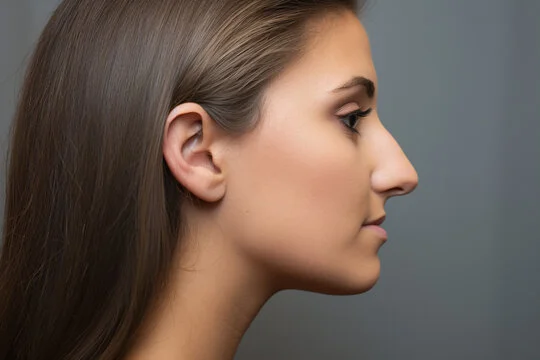
This nose shape has been admired for its association with strength and power. In ancient Rome, this nose shape was often depicted in sculptures of emperors, military leaders, and important figures. It was believed to be a symbol of authority and leadership.
From a visual perspective, the Roman nose creates a sense of balance and symmetry on the face. Its strong and pronounced structure can enhance the facial profile, giving a sense of aesthetic harmony. The distinctiveness of the Roman nose often draws attention and can contribute to an individual’s unique and memorable appearance.
It is important to note that while the Roman nose is often associated with European and Mediterranean ethnicities, it can be found across different races and ethnic backgrounds. The beauty of nose shapes lies in their diversity, showcasing the unique characteristics and heritage of individuals from various cultural backgrounds.
Greek Nose
The Greek nose is characterized by its straight and narrow bridge, leading to a well-defined and balanced tip. Inspired by ancient Greek sculptures, this nose shape is often regarded as a symbol of harmony and aesthetic perfection.
The defining feature of the Greek nose is its straight bridge. Unlike noses with prominent curves or bends, the Greek nose exhibits a straight line from the root to the tip. This straightness creates a sense of symmetry and balance, contributing to its reputation for aesthetic appeal.
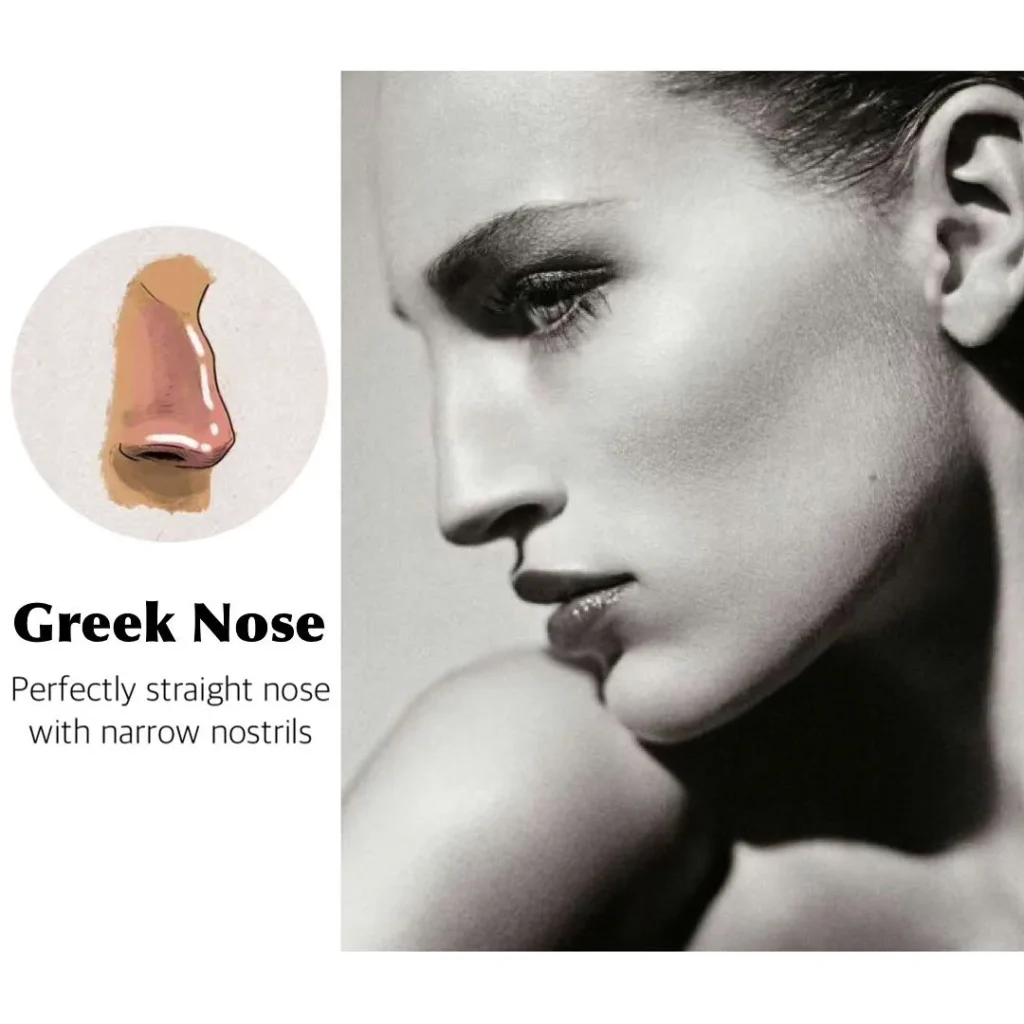
The narrowness of the Greek nose adds to its refined and elegant appearance. The bridge of the nose is often slender and well-proportioned, complementing the other features of the face. The well-defined tip of the Greek nose further accentuates its graceful and harmonious design.
In ancient Greek art, the Greek nose was considered a hallmark of beauty and represented an idealized form. It was believed to embody qualities such as grace, intelligence, and proportionality. This perception has transcended time, and the Greek nose continues to be admired for its aesthetic qualities in contemporary society.
While the term “Greek nose” is commonly used, it is important to note that this nose shape is not limited to individuals of Greek descent. It can be found in individuals from various ethnic backgrounds, as nose shapes can vary within populations.
The beauty of the Greek nose lies in its timeless elegance and balance. Its refined proportions and straight bridge create a sense of harmony on the face, enhancing facial aesthetics. Whether it graces the features of an individual of Greek heritage or someone from a different background, the Greek nose serves as a reminder of the enduring allure and appreciation for classic beauty.
Snub Nose: Unique Type of noses
The snub nose is small, short, and slightly upturned, creating a button-like appearance. Often perceived as cute and youthful, this nose shape exudes a sense of charm and approachability.
The defining feature of the snub nose is its small size and short length. The nose is compact, with a rounded shape that doesn’t extend far from the face. The upturned tip gives it a subtle upward tilt, creating a button-like appearance that draws attention and adds a sense of playfulness.

Snub noses are often perceived as cute and endearing. Their petite size and delicate proportions can evoke a sense of youthfulness and innocence. This nose shape has a soft and gentle quality that can contribute to an overall friendly and approachable facial expression.
The snub nose has been celebrated in various cultures and has been admired for its adorable and attractive appeal. It can add a touch of whimsy and sweetness to the face, making it a distinctive feature that stands out.
It’s important to note that snub noses can be found across different ethnicities and races, showcasing the diverse beauty of individuals. While some individuals may naturally have a snub nose shape, it can also be created or enhanced through rhinoplasty.
The snub nose serves as a reminder that beauty comes in all shapes and sizes. Its petite and upturned nature adds character and uniqueness to facial features, allowing individuals to embrace their own personal charm. Whether it be its cute and playful appearance or the sense of approachability it exudes, the snub nose continues to capture the attention and admiration of many.
Celestial or Turned-Up Nose Shape
The celestial or turned-up nose showcases a pronounced upward tilt at the tip, giving it a playful and perky look. This nose shape adds a touch of whimsy and uniqueness to one’s facial features.
The defining feature of the celestial nose is the noticeable upward direction of the nasal tip. The tip of the nose is slightly rotated or curved upward, creating an uplifted appearance. This upward tilt can vary in degree, from subtle to more pronounced, depending on the individual.

The celestial nose adds a playful and perky element to the face. Its upward orientation can create a sense of youthfulness and vivacity. This nose shape often imparts a sense of lightheartedness and joy, contributing to a friendly and approachable facial expression.
The celestial nose has a certain enchanting quality that draws attention and adds character to one’s appearance. It can complement other facial features, creating a sense of harmony and balance. The distinctiveness of the celestial nose can make an individual’s face memorable and captivating.
It’s important to note that the celestial nose can be found in individuals of different ethnicities and races and common in males and females. While it may be more commonly associated with certain cultures, its presence across diverse populations showcases the beauty and uniqueness of nose shapes around the world.
The celestial nose is a reminder of the delightful and magical aspects of human features. Its turned-up tip brings a touch of charm and whimsy to the face, contributing to the overall attractiveness and individuality of each person. Whether it be a subtle or more pronounced upward tilt, the celestial nose captures the imagination and radiates a sense of joy and enchantment.
Hawk or Eagle Nose Type
The hawk or eagle nose stands out with its prominent, sharp bridge that curves downward. Evoking a sense of strength and authority, this nose shape can exude a commanding and confident presence.

The defining feature of the hawk or eagle nose is the prominent bridge. It is usually high and straight, extending from the root of the nose to the tip in a pronounced curve. This downward curve can vary in degree, ranging from subtle to more prominent, creating a unique and striking facial profile.
The hawk or eagle nose is often associated with strength, power, and authority. Its commanding appearance can add a sense of regality and confidence to an individual’s features. This nose shape can create an aura of assertiveness and determination, capturing attention and leaving a lasting impression.
While the hawk or eagle nose has historical associations with nobility and leadership, it is important to note that it can be found across different ethnicities and races. It is a testament to the diverse beauty and uniqueness of human features.
The hawk or eagle nose adds character and distinctiveness to the face. Its pronounced bridge and downward curve can create a sense of balance and harmony with other facial features. This nose shape often enhances the overall facial profile, contributing to a striking and memorable appearance.
Straight or Columnar Nose Type
The straight or columnar nose is characterized by a straight bridge from the root to the tip. This symmetrical and balanced nose shape often portrays a sense of elegance and classic beauty and common in both females and male nose shapes.
The defining feature of the straight or columnar nose is its linear structure. The bridge of the nose maintains a straight and uniform shape, providing a distinct vertical line from top to bottom. This straightness can be observed from a frontal view as well as in profile.

This nose shape is often associated with balance and symmetry. The straight bridge creates a sense of harmony with other facial features, contributing to an overall pleasing aesthetic. It imparts a sense of order and proportion, drawing attention to the natural symmetry of the face.
The straight or columnar nose has a timeless quality to it. It is a nose shape that transcends trends and can be found in individuals from various ethnicities and cultural backgrounds. Its simplicity and elegance make it a versatile and universally appealing feature.
While it may not possess the dramatic curves or angles of other nose shapes, the straight or columnar nose is highly regarded for its refined appearance. It is often seen as an epitome of classic beauty and can add an air of sophistication to the face.
The straight or columnar nose serves as a reminder that beauty comes in various forms, and sometimes, simplicity can have a profound impact. Its straight bridge and symmetrical design contribute to the overall facial balance.
Embracing the Diversity of Nose Shapes
In celebrating the vast array of nose shapes across different ethnicities, we honor the remarkable diversity that defines humanity. Each nose shape, whether it be the prominent aquiline nose, the elegant Greek nose, or the playful snub nose, tells a story of cultural heritage, genetic evolution, and individual beauty. By understanding and appreciating these variations, we gain a deeper appreciation for the rich tapestry of human existence.
Embracing the uniqueness of our facial features fosters inclusivity and highlights the beauty that arises from our differences. As we continue to explore and celebrate these distinctive traits, we remind ourselves that true beauty lies in the diversity that makes each of us exceptional and irreplaceable.
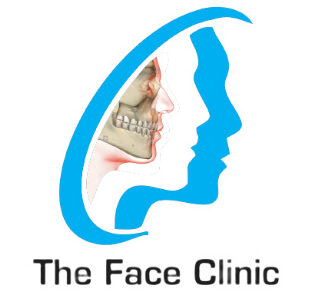



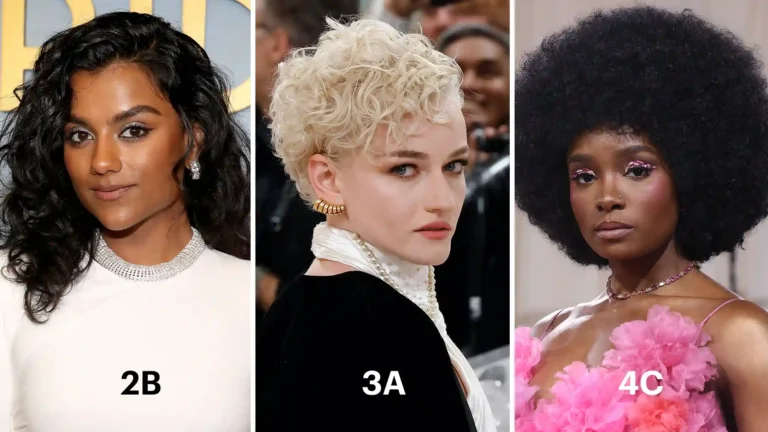
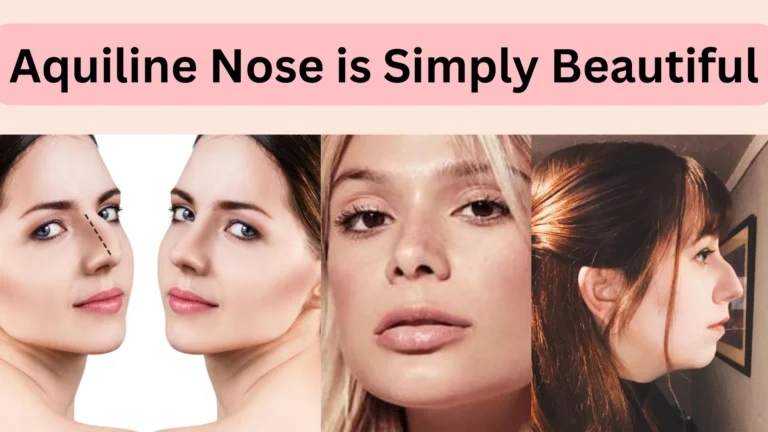

3 Comments